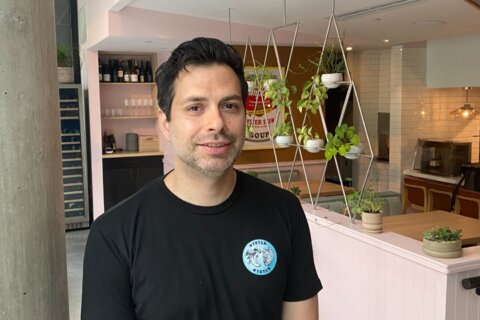▶ Watch Video: Entrepreneur hopes to make Appalachia hub for indoor farming
Jonathan Webb used to build solar energy projects for the government. Now the 35-year-old runs one of the largest indoor farming operations globally, growing row after row after row of tomatoes. His greenhouse is the size of 58 football fields.
“When we do something and we put our mind to it, we go massive,” Webb told CBS News’ Ben Tracy.
He calls his farming operation AppHarvest and it’s not just clever tech talk. It is located in Appalachia just outside Morehead, Kentucky.
“Everybody watch out for Central Appalachia. We are absolutely going to be one of the largest fruit and vegetable suppliers in the U.S. in the decades to come,” he said.
Climate change is altering our weather patterns and changing where and how we grow our food.
From 2001 to 2016, the U.S. lost 11 million acres of farmland, mostly to development. That translates to one and a half acres every minute. Across the U.S., only 19% of land is considered “best” for growing food and crops. A lot of the country’s produce comes from California and Mexico. Both places are hit with frequent and devastating droughts. Kentucky has been getting more rain and has location on its side.
“We can get to 70% of the U.S. in a one-day drive, whereas right now you’re importing product from Mexico coming two weeks on a truck,” Webb said.
AppHarvest plans to build at least a dozen of these indoor grow facilities. They use rainwater collected on the massive roof and stored in a pond the size of 70 Olympic swimming pools. Water is delivered to the plants in precise amounts, so it isn’t wasted.
“Once that rainwater’s in here, it only leaves as a tomato,” Webb pointed out.
They can grow year-round and all night thanks to special grow lights that keep the 720,000 plants inside developing. The company says farming this way uses 90% less water, no soil and results in 30 times more yield per acre than a regular outdoor farm.
It doesn’t just work for tomatoes. AppHarvest said this applies for any vine crop, including cucumbers, bell peppers, and even berries.
There are downsides — building massive steel and glass structures creates its own planet-warming emissions and takes energy to run all those nighttime lights. The tomatoes also cost a bit more than the ones grown in Mexico. But reinventing farming on a changing planet is crucial. The United Nations reports that the world’s farmers need to grow 60% more food by 2050 to feed the estimated 9.3 billion people that will be living on the planet. Webb said that time is running out to figure out how to make this possible.
“This is 30 years away. We’re not talking like great-grandkids need to figure this out. We’re talking we need to figure this out,” he said.
Webb has big backers, including Martha Stewart, who sits on his board of directors.
“I was terrified. Is Martha going to like this tomato? So…we got her a box…Martha calls, ‘These are fabulous, they’re wonderful,’ she posted them on Instagram, and that was the moment we knew that we had a winner,” Webb said.
Webb is from Central Appalachia, an area hit hard by the collapse of tobacco and coal where 1 in 3 people live below the poverty line. Sam Smith used to harvest tobacco but when it closed down, so did his income.
“And that came to a halt. So did the money. And so it’s hard to find you know good consistent work like this. You know it’s a blessing,” Smith said.
AppHarvest has created more than 500 jobs at their one Morehead facility. The company has also given stock options to its employees.
“There were people in tears. People that never owned a car, never owned a house,” Webb said.
He believes he and his team are building a new future for Appalachia.
“It’s a runaway freight train. Now it’s a matter, how big is it gonna be, how fast are we gonna go?” Webb said.







